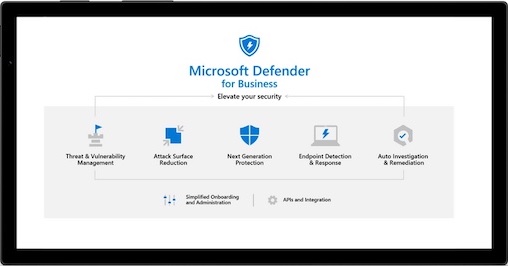Ways To Prevent LastPass Security Breach While Travelling
When traveling, personal and sensitive information becomes increasingly vulnerable. The risk of a LastPass security breach while traveling can lead to the compromise of critical data. LastPass, a popular password manager, stores user credentials and secure data. If a security breach occurs, attackers can exploit stored information, which may include usernames, passwords, and sensitive notes. Understanding how to protect your LastPass account while traveling is crucial to maintaining your privacy and security.
LastPass security breach prevention using strong master password
The initial line of defence against a potential LastPass security breach is the master password. The master password is the key to your vault, so it must be robust and hard to guess. Use a combination of letters, numbers, and symbols to make the password as secure as possible. Avoid simple phrases or easily guessable words. Consider using a password manager to generate and store a complex master password that you can easily remember.
Enable multi-factor authentication
Multi-factor authentication adds an extra layer of security to your LastPass account. Enabling MFA requires 2 or more forms of verification before granting access to your account. This means that even if someone steals your master password, they won’t be able to access your account without the second factor. When traveling, using MFA helps protect your LastPass account from unauthorised access, especially on unfamiliar networks.
Regularly update your passwords
While traveling, it is a good idea to regularly update your passwords. Passwords can be exposed to various risks, including theft or exposure to insecure networks. LastPass allows you to easily change and update stored passwords, ensuring that any potentially compromised passwords are quickly replaced. Updating passwords minimises the impact of any breach, particularly in unfamiliar or high-risk areas.
Use LastPass’ emergency access feature
LastPass provides an emergency access feature that can help prevent issues if your account is compromised while traveling. This feature allows you to grant a trusted person access to your vault in the event of an emergency. Set up emergency access in advance, especially when traveling to unfamiliar areas where security risks may be higher. Having someone you trust access your account ensures that you don’t lose control of your credentials in a crisis.
Secure devices with strong passwords
Devices used to access your LastPass account should also be protected with strong passwords or biometric authentication. Travelers often use public Wi-Fi, which increases the risk of hacking attempts. Always use device encryption and enable automatic locking features on your phone, tablet, or laptop. This ensures that if your device is lost or stolen, unauthorized individuals cannot access your LastPass vault.
Avoid using public Wi-Fi networks for sensitive transactions
Public Wi-Fi networks, such as those found in airports or cafes, are not secure. These networks are prime targets for hackers looking to intercept sensitive information. Avoid accessing your LastPass account or conducting any other sensitive transactions over public Wi-Fi. Instead, use a VPN (Virtual Private Network) to encrypt your internet connection. A VPN creates a secure tunnel for your data, making it far more difficult for hackers to access your credentials.
Monitor account activity regularly
LastPass offers an activity log feature that allows you to track all activity associated with your account. Regularly monitor this activity log while traveling to detect any unusual or unauthorized access attempts. If you notice suspicious activity, such as logins from unfamiliar locations, immediately change your master password and revoke any affected sessions. Being proactive about monitoring account activity can prevent security breaches from escalating.
Use a trusted VPN service
A VPN encrypts your internet traffic and protects your data from eavesdropping. When traveling, a VPN is especially useful for securing your internet connection on unsecured networks, such as those found in hotels or airports. Ensure that you use a trusted VPN provider to prevent your data from being intercepted. Avoid free or unreliable VPN services, as they may expose your data to potential attackers.
Avoid storing highly sensitive information in LastPass
While LastPass provides secure storage for passwords and notes, it’s a good practice to avoid storing highly sensitive information, such as credit card details or personal identification numbers (PINs). If your LastPass account were compromised, this information could be exposed. Use separate, more secure methods to store highly sensitive data, and only store general passwords and other non-critical information in LastPass. This reduces the risk of exposure in the event of a security breach.
Utilise secure backup options
While traveling, have a secure backup option for your LastPass account. LastPass allows you to export your password vault for offline storage. However, this exported data must be protected with strong encryption and stored securely. If you choose to back up your LastPass vault, ensure that it is kept in a safe location, such as an encrypted USB drive or a secure cloud storage service. This allows you to recover your information if your account is compromised.
Educate yourself about phishing attacks
Phishing attacks are the most common method of gaining unauthorised access to accounts like LastPass. Cybercriminals may send emails or messages pretending to be from trusted sources, asking for login credentials. Be cautious of any unsolicited emails or messages asking for personal information. Always verify the source of any communication and never click on links or attachments from unknown senders. Educating yourself about phishing techniques will help you avoid falling victim to these attacks.
Disable autofill features on public devices
Autofill features can save time and effort, but they can also be a security risk, especially on public or shared devices. When traveling, disable autofill features on any device used to access your LastPass account. This prevents your credentials from being saved on devices you don’t control. Always log out of your LastPass account after each session and clear your browser history to prevent unauthorised access.
Set up a secure backup email address
Your email account is a crucial part of your LastPass security. In case you lose access to your LastPass account, you’ll need a secure email address to recover it. Set up a backup email address that is separate from your primary account. This ensures that if your primary email is compromised, you can still recover your LastPass account using a secure alternative.
Keep your LastPass vault organised
A cluttered LastPass vault can lead to confusion and mistakes, which can increase the likelihood of falling for phishing scams or making errors. Organize your vault by categorizing your passwords and notes. This makes it easier to quickly locate your credentials and ensures that you don’t overlook important security information. An organised vault allows for quicker updates, reducing the chances of leaving outdated passwords vulnerable.
Use strong and unique passwords for all accounts
Each password in your LastPass vault should be unique and strong. Using the same password across multiple accounts makes it easier for hackers to gain access to more than one service. LastPass can generate strong, random passwords for all your accounts, making it easier to avoid password reuse. Strong, unique passwords for each account provide an additional layer of protection against security breaches.
Always log out after using LastPass
When traveling, log out of your LastPass account after each use, especially on shared or public devices. Logging out prevents unauthorized individuals from accessing your account if the device is left unattended. Many travelers make the mistake of leaving their accounts open for convenience, but this can expose sensitive data. Always remember to log out to protect your information.
Staying safe with LastPass on the go
Traveling requires extra vigilance to ensure that your LastPass account remains secure. By following these security practices, you can minimize the risks of a LastPass security breach. Enabling multi-factor authentication, updating passwords, and using VPNs are simple yet effective ways to protect your information. Combining these strategies with cautious behavior online will help you maintain the security of your LastPass account while on the go.





